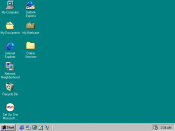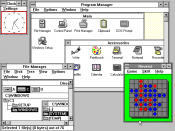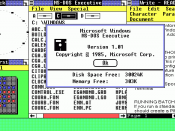The Microsoft operating system has seen many changes over the last twenty years. From Microsoft?s Disk Operating System (DOS) introduced in 1981 to Windows Millennium Edition, first seen on store shelves in late 2000, Microsoft?s operating system has changed completely. What began as a difficult to understand, and sometimes difficult to use, text only operating system, has evolved into a completely graphical, very user-friendly interface. As computer hardware changes, so must the software connecting it with the user. Microsoft?s operating systems have evolved and changed greatly with the evolution of computer systems.
Microsoft?s DOS 1.0 became one of the most important operating systems for personal computers when IBM chose to use DOS in many of their PCs. The only competitor for the operating system at the time for Intel?s 8088 processor was a version of CP/M (Control Program/Monitor) published by Digital Research and sold for $249. It also did not come bundled with any programming software, meaning you would have to buy UCSD (University of California at San Diego) p-system, which was based on the Pascal programming language, and sold for another $149.
At the time, Microsoft had recently purchased QDOS (Quick & Dirty Operating System) from Tim Paterson of Seattle Computing. Microsoft then offered to license a customized version of QDOS bundled with BASIC (Beginner's All-Purpose Symbolic Instruction Code) to IBM. IBM accepted the offer, and later marketed the operating system as PC-DOS. Since Microsoft only licensed DOS to IBM, they retained the rights to sell it to users and other companies as they wished. PC-DOS and MS-DOS both cost $49, a considerable savings over the CP/M and UCSD p-system combination, and in most cases IBM gave PC-DOS away with their computers. Soon, 99% of all PCs were running Microsoft?s DOS.
MS-DOS was a 16-bit,


